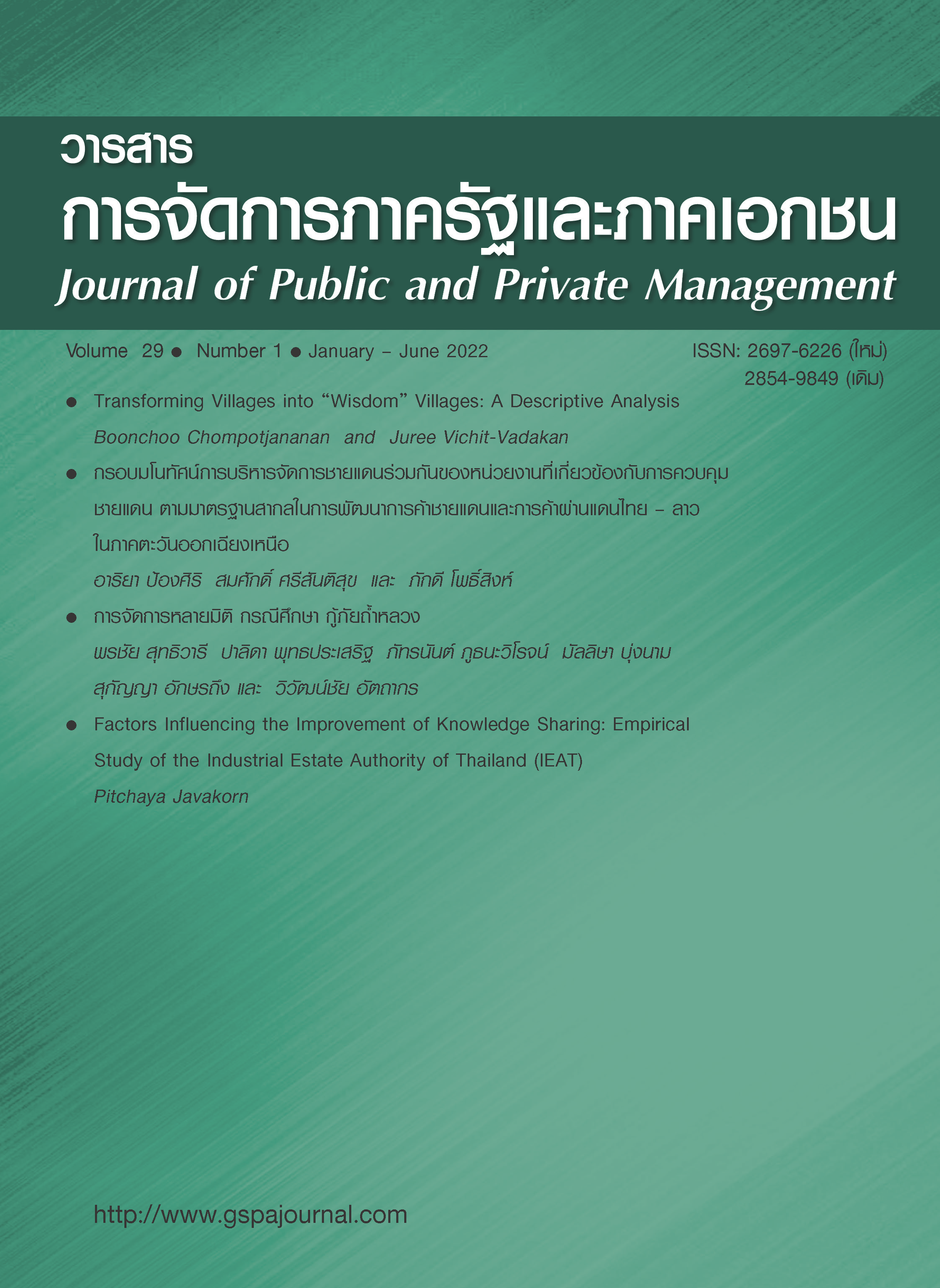Framework of Joint Border Management of Border Control Agencies Based on the International Standards for Developing Border Trade and Cross-Border Trade between Thai and Laos in the Northeast
Keywords:
Coordinated border managementAbstract
Coordinated Border Management (CBM) is a collaborative approach between border agencies of both local and international. To maximize benefits of moving goods and travel together, therefore, border management focuses on adjusting the duties of the border control agencies by adhering to two main issues: physical movement of the product and data linking for maximum benefit in border control for CIQ systems. In Thailand Legal officers come from different departments with an emphasis on the role of customs and primarily immigration. The inspection and breeding of plants and animals is a common mission with both of those main missions which border management will have a combination of various problems together. Sometimes unable to use the solution to the problem by using only the agency or one organization, therefore, to be able to solve such problems effectively and efficiently it is necessary to adjust the operations of various agencies related to a particular problem working together flexibly and enhancing the concept of aiming to create greater success in joint operations between departments in the context of multi-organization collaboration networks.
References
Agranoff, R., & McGuire, M. (2003). Collaborative Public Management: New Strategies for Local Government. Washington D.C.: Georgetown University Press.
Ansell, C., & Gash, A. (2008). Collaborative governance in theory and practice. Journal of Public Administration Research and Theory, 18(4), 543-571.
Bryson, J. M., Crosby, B. C., & Stone, M. M. (2006). The design and implementation of cross-sector collaborations: Propositions form the literature. Public Administration Review, 66(S1), 44-55.
Collett, E. (2011). Emerging Transatlantic Security Dilemmas in Border Management. Washington D.C.: Migration Policy Institute.
Jaikaew P. (B.E.2549). Quality’s Service of the One Stop Service Center in Mae Sai Customs House, Chiang Rai Province.Independent Education, Master of Public Administration. Chiang Mai University.
Koslowski, R. (2011). Information Technology and Integrated Border Management. Geneva Centre for the Democratic Control of Armed Forces (DCAF).
Noisopha S. (B.E.2557). The role of international trade borders of Thailand. Journal of Humanities and Social Sciences Thonburi University, 13(1), 118-126.
Ostrom, E., (1990). Governing the Commons: The Evolution of Institutions for Collective Action. Cambridge, NY: Cambridge University Press.
Thai Customs Department. (B.E.2552). Preparation of the Customs Department to Support Border Trade in 2017. Custom Bulletin.
______________________. (B.E.2557). Report of Coordinated Border Management (CBM). Bangkok: Customs Department.
Yang, L., Wu, J. (2012). Knowledge-driven institutional change: An empirical study on combating desertification in northern China from 1949 to 2004. Journal of Environmental Management, 110(15), 254-266.
Zarnowiecki, M. (2011). Borders, their design, and their operation.In McLinden, G., Fanta, E., Widdowson, D., & Doyle, T. (Ed.) Border Management Modernization. Washingtion D.C.: The World Bank.
Downloads
Published
How to Cite
Issue
Section
License

This work is licensed under a Creative Commons Attribution-NonCommercial-NoDerivatives 4.0 International License.



